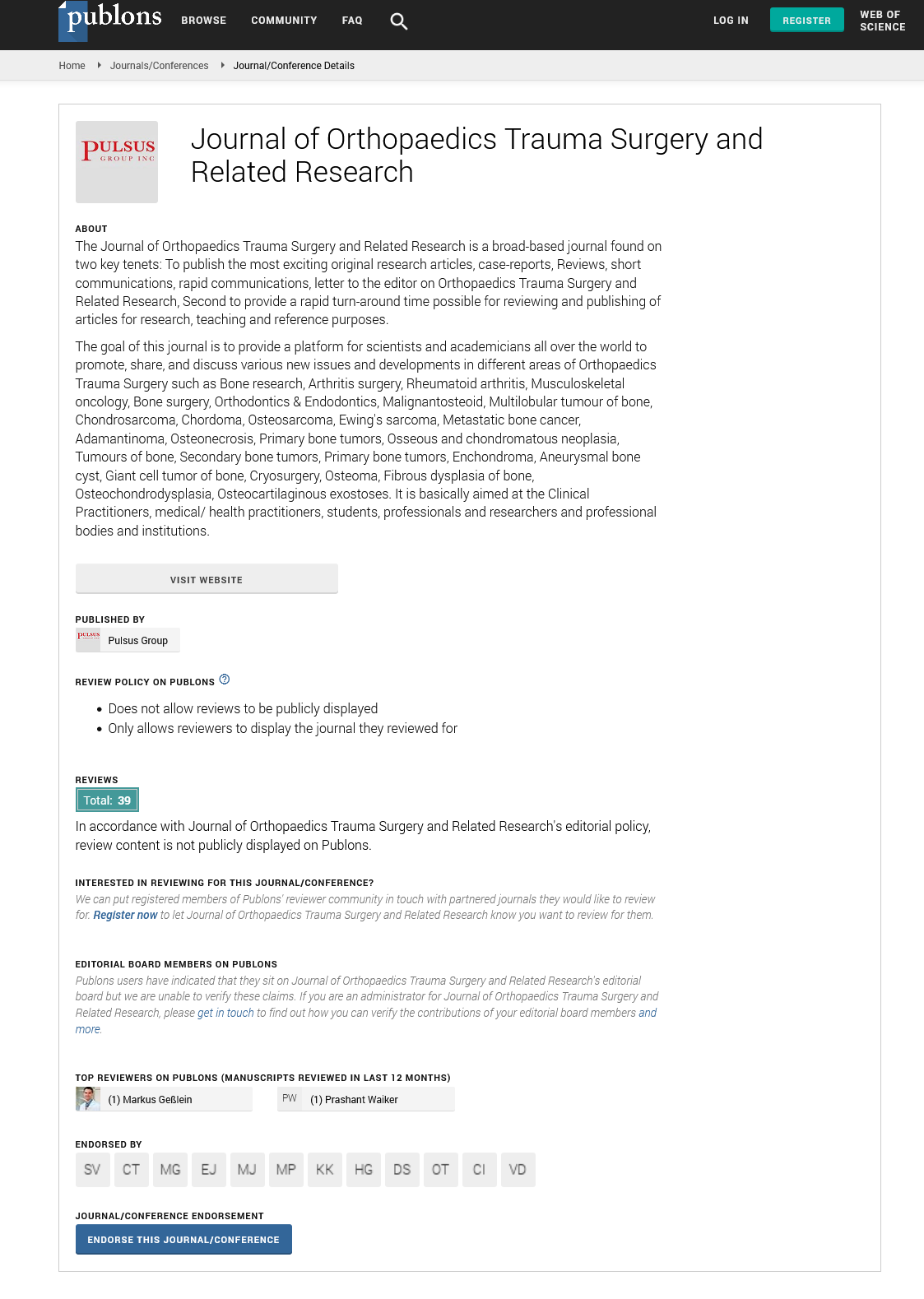Slipped femoral epiphysis
Received: 11-Nov-2021 Accepted Date: Nov 15, 2021 ; Published: 25-Nov-2021, DOI: 10.37532/1897-2276.2021.16(1).53
This open-access article is distributed under the terms of the Creative Commons Attribution Non-Commercial License (CC BY-NC) (http://creativecommons.org/licenses/by-nc/4.0/), which permits reuse, distribution and reproduction of the article, provided that the original work is properly cited and the reuse is restricted to noncommercial purposes. For commercial reuse, contact reprints@pulsus.com
Abstract
SCFE (Slipped Capital Femoral Epiphysis) is an adolescent growth plate condition in which the femoral head shifts (“slips”) relative to the remainder of the femur. While the head of the femur remains in the hip joint’s cup, the remainder of the femur shifts. The femur is the thigh’s long bone. There is a “ball” at the end of the femur that attaches to the hip (called the femoral head). The acetabulum is a “cup” made up of the pelvic bones that houses the ball. The epiphysis is the end of the head that connects to the remainder of the femur during growth, and the growth plate connects it to the rest of the femur.
Introduction
SCFE has an aetiology that is unknown. There are, however, a slew of factors linked to this illness. These circumstances cause the growth plate (also known as the “physis”) to weaken, allowing the femoral head (ball of the femur) to fall off the femur’s neck. Obesity is a major risk factor for this. Hypothyroidism and osteodystrophy are two endocrine conditions that are risk factors for SCFE. This condition may have a genetic propensity (it runs in families). Boys are more likely than girls to be affected.
Groin, inner thigh, and knee pain are common complaints. They may experience stiffness and a reduction in their capacity to rotate their leg. In addition, their stride, or the way they walk, may shift as they try to place as little weight on the affected side as possible. They may also walk with their legs turned outward. The onset of pain and/or limp is usually slow and progressive. Symptoms, on the other hand, can appear unexpectedly and be linked to a little fall or trauma. A detailed medical history and a thorough physical examination will be obtained by the paediatric orthopaedic specialist. He or she will also order X-rays in order to arrive at a definitive diagnosis. If the x-rays are equivocal, an MRI may be required in rare cases.
The treatment goal is to keep the femoral head from slipping any further and avoid problems. Surgery is used to do this. To join the femoral head to the rest of the femur, a screw is inserted. If there are severe deformities, the surgeon may choose to straighten the bones before inserting the screw. The surgeon may also suggest putting a screw in the hip that isn’t affected to avoid slippage before it happens. In some circumstances, the slide is quite unstable (and may move further rapidly), thus it’s critical that the patient consults an orthopaedic surgeon as soon as possible. In extreme circumstances, surgery should be performed the same day as the diagnosis. Most slips, on the other hand, are stable and can be treated surgically in 3-14 days. It is critical that the youngster rest and avoid putting weight on the damaged limb during the time between diagnosis and operation. For a while following surgery, the youngster will only be able to bear little weight on the leg and will need crutches or a walker to go around.



 Journal of Orthopaedics Trauma Surgery and Related Research a publication of Polish Society, is a peer-reviewed online journal with quaterly print on demand compilation of issues published.
Journal of Orthopaedics Trauma Surgery and Related Research a publication of Polish Society, is a peer-reviewed online journal with quaterly print on demand compilation of issues published.